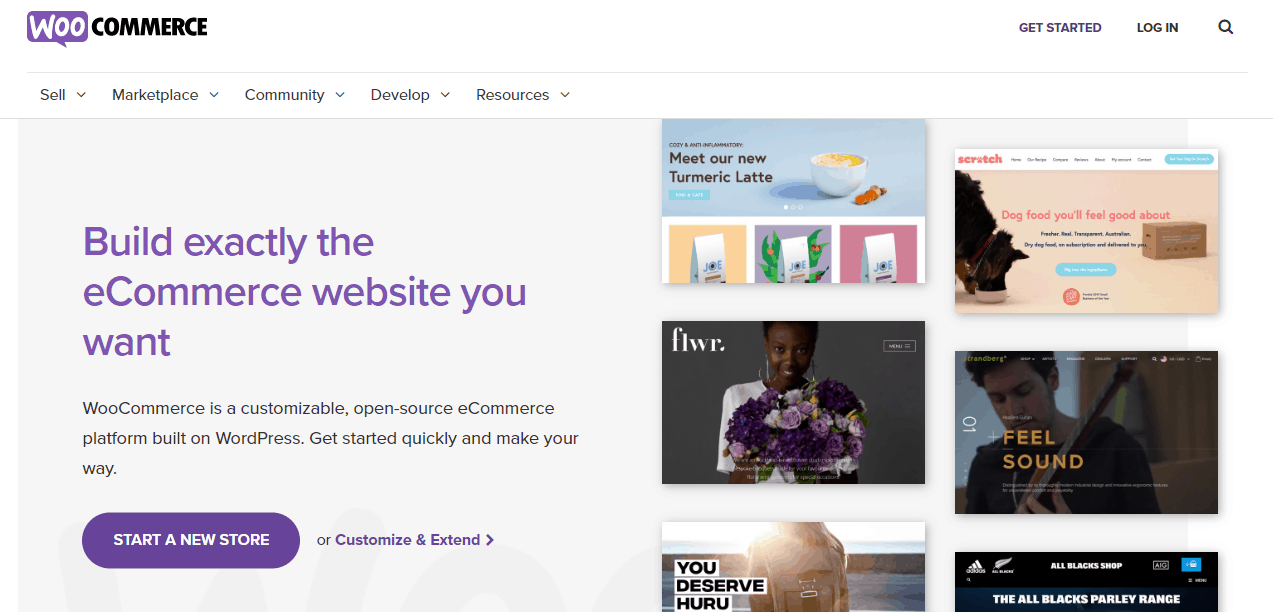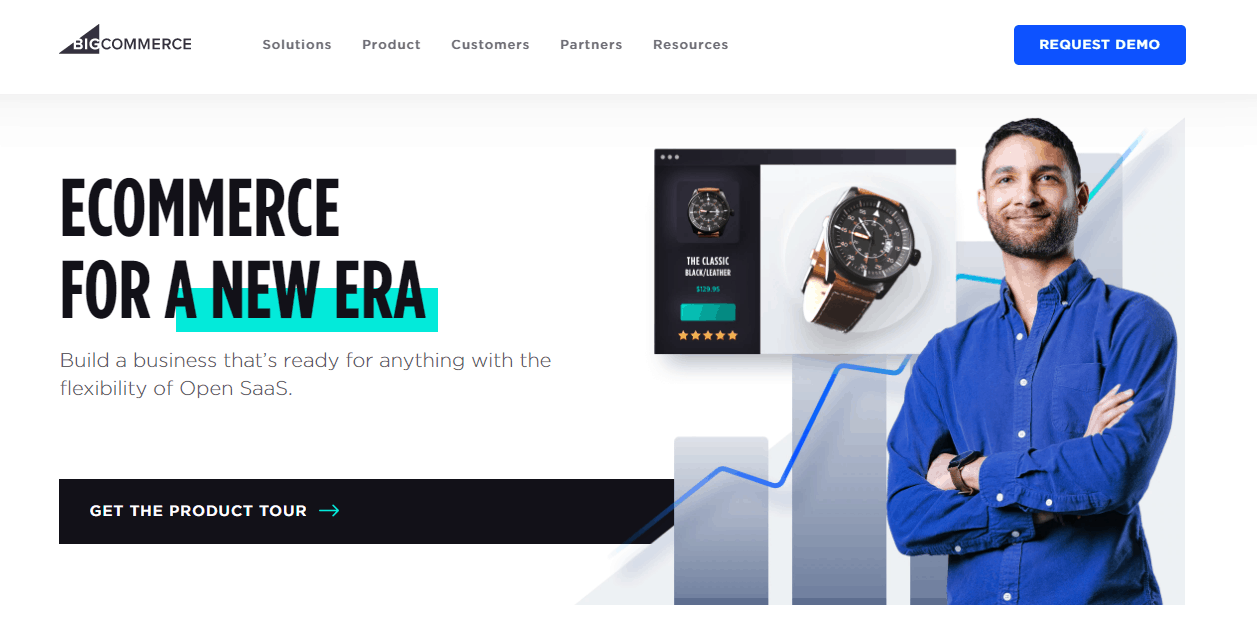At the turn of the millennium, retail was ruled by grandiose shopping malls housing hundreds of stores. As soon as the “biggest mall in the world” was opened there was another opening just a few months down the line, looking to grab the moniker. It almost seemed like a race, that just kept getting bigger and bigger.
Fast forward 20 years and even the concept of a mall seems archaic. Besides grocery stores and specialized sellers, there is simply no more need to physically go looking for stuff to buy – everything’s gone online.
Not satisfied with your current #eCommerce platform? Maybe it’s time to switch to a stronger one. Learn all about that in this article!
With the evolution of, most predominantly, internet infrastructure (quicker speeds more than anything), eCommerce has become widely accessible and widely used, going leaps and bounds from where it was in the beginning (we all know the story of Amazon). Big retailers keep both stores and webshops, while smaller ones forgo stores for webshops, because of smaller costs.
Since eCommerce has already become an essential part of a successful business (and that part will just keep growing), it’s important to know how to position yourself and your business in this market i.e. what tools do you need to have in order to keep in the black.
Size and scope
The first step in determining which platform would be optimal for your site is figuring out what you need. These needs won’t be the same for a small family business and a state-wide franchise.
Most platforms specialize in providing services for a certain kind of business (scope-wise), which means, just like Goldilocks, you need to find the one that’s just right. This is where we come on.
We’ll outline a few templates in terms of what a business might need from an eCommerce platform, list some of the best solutions on the market, and highlight when you should step up a notch.

It’s important to note that these will all be eCommerce platforms, not simply WordPress plugins that just add a cart to your site. These plugins most definitely serve a purpose and have their rightful place in the plethora of available webshop tools. However, they are most often used as an addition to a regular site that provides content and sells something.
The point is, it’s not their primary function – think of a game streaming site where you can also buy merchandise like T-shirts or hoodies. This is not what we’ll be talking about. Instead, we’ll be operating on the assumption that you are looking for a solution intended for a dedicated eCommerce site.
Hosting
One of the many features that define an eCommerce platform is its hosting type. The two main choices are self-hosted or cloud hosting. This is an important choice to make because not all platforms offer both options, meaning if you’re dead set on cloud hosting, you’d be closing the door on any platform that offers just self-hosting.
As with everything else, there are positives and negatives with each of these. If you decide on a self-hosted platform, you’ll need physical servers somewhere on-site from which the store will be run. These offer you greater control over all the moving parts and better oversight in general.
However, both software and hardware always need to be maintained, and acquiring the servers in the first place could put a serious dent in your budget (especially if there is a need to adapt the servers to the space they’ll be housed in). Installation aside, the costs will more often grow than decrease over time.

On the other hand, cloud hosting leaves many of those issues to be handled by the provider allowing you to use it more as a subscription service like you would a phone plan. But the cost of having to worry less comes at the price of freedom and control you would have when using self-hosting.
It’s important to note that platforms usually have an “Enterprise” tier where the features you get are highly customizable, which eliminates most, if not all of those hands-on control tendencies you might have.
It’s been shown that self-hosting is most prominently used in the IT sector where businesses already possess the know-how to operate or by bigger companies with dedicated IT departments. Cloud hosting is therefore at home with all of those that don’t want or can’t get into all the technical stuff.
As we’ve said earlier, there are platforms that offer both, so if you’re in doubt about your choice and could see yourself switching it would be wise to opt for one of those platforms.
Starting out/small businesses
Now we finally come to the natural progression of a business and will cover which platform is best for which stage. Naturally, there will be those that are so engrossing, they can cover multiple stages, but we’ll try to diversify as much as possible.
If you’re just starting out with bigger plans or run a small business, you’ll be looking at pretty much the same options mostly concentrated around finding the most optimal platform. As your business grows, so will your needs, but for now, let’s stick to the basics.
So, you’ve decided to open up a novelty T-shirt store with an exclusively online shop. You’ve got your materials, the press is ready and waiting in the garage to start working, all you need is the orders to come in.
As your budget is most certainly limited the cost of a platform is a top concern, also you don’t have the knowledge, or even the space for self-hosting, meaning only cloud hosting platforms are a viable option.
Let’s see what’s out there for you!
Shopify

Shopify is one of the fastest-growing platforms on the market today. It’s still primarily focused, and most used by small businesses or as a great starter option to sell online. A substantial percentage of their users have less than 100 articles up for sale, which gives you a good idea where the potential cut-off could be for you i.e. when it’s time to move on to bigger things.
Since Shopify has a really quick learning curve you might even want to stay with them for the long run, even after your business has grown – this is where Shopify Plus comes in.
It’s an enterprise addition that upgrades the original concept and could prove useful in that transition period. Unfortunately, if you outgrow the “medium business” label you’ll probably have to switch to another solution.
WooCommerce

If you’ve heard about just one platform we’ll list here, it’s probably WooCommerce. The fact that it is the most widespread eCommerce platform among WordPress users in the last couple of years tells you that you won’t have many worries when opting for it.
Because of its user-friendly interface, you’ll find it easy to work with and it will seamlessly integrate with WordPress so the functions you’re learning for one platform transfer to the other.
Another great thing about WooCommerce is the integrations with other plugins. Thanks to its popularity, plugins that offer various tools that make your life easier will have an automated integration with the platform, making them “plug and play”, with no further set up required (other than customization).
While WooCommerce has all the fundamental features you’ll need to run a webshop, just like with Shopify, sooner or later, you’ll probably outgrow it. However, with all the add-ons at your disposal that make the core platform even more useful, it’s safe to say outgrowing it will happen later, rather than sooner.
Medium businesses
There is some debate about what constitutes a medium business, but we won’t be adding to that discussion. Instead, when you feel that your current platform can’t follow your growth hardware-wise, logistically, or because of limited features, it’s time for an upgrade.
The easiest way to know you’ve come to the tipping point is frustration – if you’re constantly frustrated because the platform you’re using can’t keep up and you are spending more time contacting support than working on the platform, then don’t bother.
BigCommerce

BigCommerce offers a more robust solution for an eCommerce platform. It is also one of the few solutions that offer both cloud and self-hosting.
Because of the many complex features that include advanced shipping options, payment gateways, various professional themes, etc. the learning curve is ostensibly steeper than with the platforms listed before.
Among other things, there are also integrated SEO options that enable you to improve your Google rank without having to waste additional time and resources on 3rd party software.
The only drawback is the price. As you would expect, you get what you pay for, so be prepared to pay for those extra features.
Magento

In its heyday, back in the middle 2010s, Magento was the most popular platform out there. Over time others have passed them by, but they are still more than a viable option.
With Magento, there are two options to choose from – the free Magento open-source and Magento Enterprise – the focus here is on the latter, as you’ve probably guessed.
The pedigree of an older industry player brings with it a couple of things – primarily large databases in every aspect from functional add-ons to themes. But the vast catalog of options brings with it, like the aforementioned BigCommerce, a steep learning curve to the point where hiring an IT professional to at least set everything up is a real possibility.
But don’t worry, the end result will be worth it.
Big businesses
Multimillion-dollar businesses have a different set of rules and expectations than the rest. If/when you’ve reached this point, even though there are fully customizable eCommerce solutions available nowadays, your best option is to have a platform built from scratch just for you.
A global brand must maintain its appearance and therefore you have to be unique.
By now, you probably have a dedicated IT department that will take care of all the work anyway, the main question is how much you’re willing to invest to make your idea happen.
Conclusion
Through the three stages we’ve highlighted above, you’ll find that your priorities will change from just surviving, to expansion and finally maintaining a brand image.
There isn’t a universal eCommerce solution that will follow you on your journey the whole way through. Even if you’re comfortable with your current solution, don’t be afraid to change it if there is something better out there.
Finally, as you’re always trying to move forward, expect the same from the tools you’re working with.